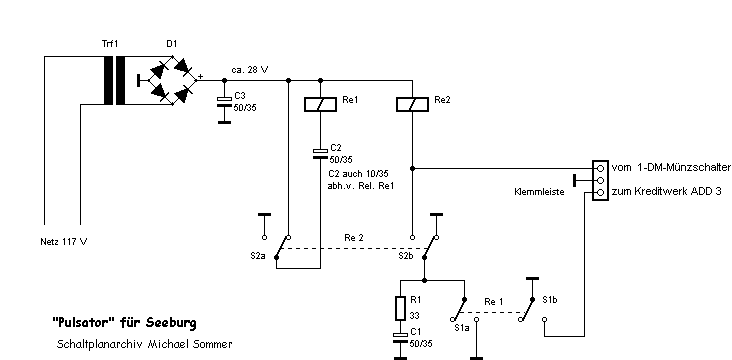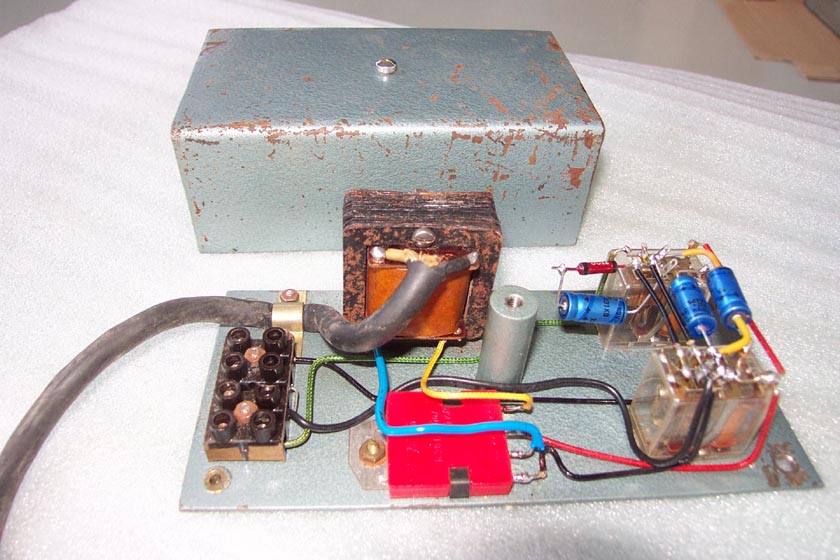|
FAQ Seeburg Musikboxen im Archiv von Jukebox-World |
||
|
Seeburg: Kredit - Credit |
Copyright |
|
| Kreditgerät - Credit unit - Créditeur | Münzung - Coins - Monnaie | |||||||
| SPU1 (Single Pricing Unit) | Nickel - 1 Play
(Spiel) Dime - 2 Plays (Spiele) Quarter - 6 Plays (Spiele) |
|||||||
| SPU1H (Single Pricing Unit) | 2 Nickel - 1 Play
(Spiel) Dime - 1 Play (Spiel) Quarter - 3 Plays (Spiele) Half Dollar - 7 Plays (Spiele) |
|||||||
| HDU1 (Half Dollar Unit) Accessory for SPU and DPU |
Dime - 1 Play
(Spiel) Quarter - 3 Plays (Spiele) Half Dollar - 7 Plays (Spiele) |
|||||||
| DPU1 (Dual Pricing Unit) | Dime - 1 Play
(Spiel) 15 Cent - 1 EP Play (EP Spiel) Quarter - 3 Plays or 2 EP Plays (3 Spiele oder 2 EP Spiele) |
|||||||
| DPU5 (Dual Pricing Unit) | Nickel - 1 Play
(Spiel) Dime - 1 EP Play (EP Spiel) Quarter - 6 Plays or 3 EP Plays (6 Spiele oder 3 EP Spiele) |
|||||||
| Pulsator (Impulsverdoppler) | 20 Pf. - 1 Spiel
(play) 30 Pf. - 1 EP 50 Pf. - 3 Spiele (plays) 1 DM - 6 Spiele (plays) |
|||||||
| APU1 / APU1-H5 (Album Pricing Unit) |
Dime - 2, 3 or 4 Plays (Nickel
credits) Quarter - 3, 4, 5, 6, 7 or 8 Plays (Nickel credits) Half Dollar - 5, 6, 7, 8, 9, 10, 11, 12, 13, 14 or 15 Plays (Nickel credits) |
|||||||
|
EAPU2-5-H151 (Album Pricing Unit, Germany |
2x10 Pfg. - 1 Spiel
(play) 50 Pfg - 3 Spiele (plays) 1 DM - 6 Spiele (plays) 1 DM - Albumwahl (album play) |
|||||||
| SPU3 / SPU3-H5 (Single Pricing Unit) |
Dime - 1 Play
(Spiel) Quarter - 3 Plays (Spiele) Half Dollar - 6 Plays (Spiele) |
|||||||
|
Glossar: Nickel: 5 Cent Dime: 10 Cent Quarter: 25 Cent Half Dollar: 50 Cent coin H5: 50 Hz version Pfg: Pfennig (old German currency) DM: Deutsche Mark (old German currency)
|
||||||||
| Seeburg Pulsator | ||||||||
Bilder: Michael Sommer
|
||||||||
|
|
||||||||
| Speicherung der Kredite - Modelle mit Black & Grey Boxes | Storing of credits - models with Black & Grey Boxes | |||||||
|
Bei meiner ESTD3 (Sunstar)
sind nach dem Aus- und wieder Einschalten alle Kredite weg. Wo werden
diese gespeichert? Black & Gray Boxes wurden ab der LS3 (1969) bis zur STD4 (1977) verwendet.
|
With my
ESTD3 (Sunstar), all credits are gone after switching it off and on
again. Where are these stored? Black & Gray Boxes were used from the LS3 (1969) to the STD4 (1977).
|
|||||||
|
Die Angaben haben keinen
Anspruch auf Vollständigkeit oder Richtigkeit. |
||||||||
Ein Service von Copyright by Stamann Musikboxen |
||||||||


